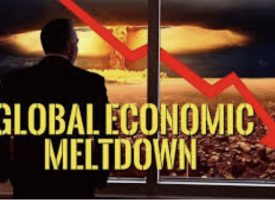Today King World News is featuring a piece by a man whose recently released masterpiece has been praised around the world, and also recognized as some of the most unique work in the gold market. Below is the latest exclusive KWN piece by Ronald-Peter Stoferle of Incrementum AG out of Liechtenstein.
By Ronald-Peter Stoferle, Incrementum AG Liechtenstein
November 13 (King World News) – Worried About Gold / Silver Action – Just Read This
Stock-to-flow: the special anomaly of gold stocks
Attentive readers of our reports and articles are by now well versed with the concept of the stock-to-flow ratio. However, it is important for us to bring this special characteristic into context with gold stocks.
High stock-to-flow ratio also has consequences for gold producers….
Continue reading the Ronald Stoferle piece below…
Advertisement
To hear which company is the highest grade silver producer in the world
located in one of the most mining friendly countries and
offers investors massive blue sky click on the logo:

Gold is quite unlike consumable commodities (i.e., also from precious metals like platinum and palladium) in that the bulk of the amount mined is hoarded and not consumed. The total amount of gold hoarded is kept in the form of coins, bars, and some indirectly in fabricated form including jewelry and works of art. The large stocks held in reserve are like a giant “warehouse” and one consequence of this is that long periods of excess supply are possible.
Under certain circumstances, the price can fall well below the cost of production, should industrial demand be supplied from existing stocks. It is often asserted that the price of gold cannot fall below the cost of production. This often-cited argument regarding a natural lower price limit is not applicable in gold's case.
This is also an important difference to all other commodity producers. The demonetization of a metal results typically in a decline in stocks held in reserve. One example for this is the transition from the bi-metallic standard to the gold standard. Silver was demonetized, and the monetary stock was released in subsequent decades for industrial purposes. The loss of monetary demand had a corresponding negative effect on prices. This can be seen in the gold/silver ratio (below).
Gold/Silver Ratio Since 1800
Remonetization, on the other hand, leads to a massive structural demand imbalance. For instance, if a paradigm shift in monetary policy occurs in a fiat money system after decades of stable monetary policy, massive monetary demand for gold and silver can ensue. The 1970s provided a good example of this. In such a case, the price will rise significantly above production costs and gold mining stocks can rally for many years (see chart below).
Barron's Gold Mining Index Since 1939 (log scale)
Therefore this monetary commodity anomaly also leads to anomalies with respect to their producers. Such a super-cycle is, in our opinion, triggered first and foremost through long-term changes in the financial order. For mining companies and investors in mining companies this has the following important consequences:
* Historically, bull and bear markets of above average length can be detected in gold stocks.
* The super-cycle is triggered by fundamental changes in the monetary framework.
* Trends that are sustained over the long-term tend to affect corporate governance.
* After extended boom periods, structurally high margins often lead to a sub-optimal handling of corporate resources.
* Extended periods of depression bring about massive consolidation in the sector and the remaining companies are forced to operate extremely efficiently.
* For investors, the most interesting entry points are offered after years of consolidation.
* The extraordinarily strong top-down influence of monetary policy-related events on this asset class argues for active timing of investment in mining stocks.
The following chart illustrates that gold stocks are anything but “buy and hold” investments and must be actively managed. This is also confirmed by the saying: “Market and sector forces together typically cause 80% of the price movement in a stock. That means the company fundamentals usually account for less than 20% of a stock’s price movement. This is the reason a company’s stock price sometimes seems to move independently of the fundamentals.”1
Amex Gold Bugs Index: Bull and Bear Market Cycles Since 1999
1 “The Latent Statistical Structure of Securities Price Changes” Benjamin F. King
IMPORTANT – KWN has many more interviews being released today.
© 2014 by King World News®. All Rights Reserved. This material may not be published, broadcast, rewritten, or redistributed. However, linking directly to the blog page is permitted and encouraged.
The audio interviews with William Kaye, Dr. Paul Craig Roberts, Andrew Maguire, Eric Sprott, Bill Fleckenstein, Rick Santelli, Rick Rule, Andrew Huszar, John Mauldin, Egon von Greyerz, Michael Belkin, and Marc Faber are available now. Other recent KWN interviews include Jim Grant and Felix Zulauf — to listen CLICK HERE.










